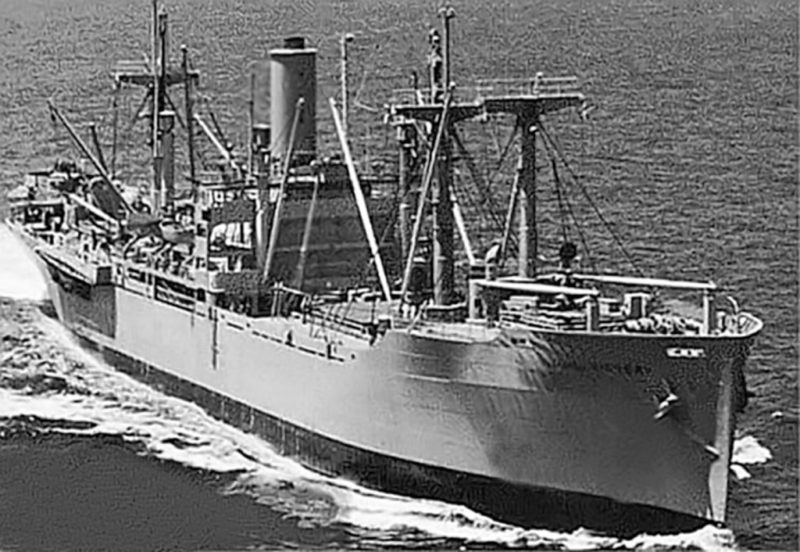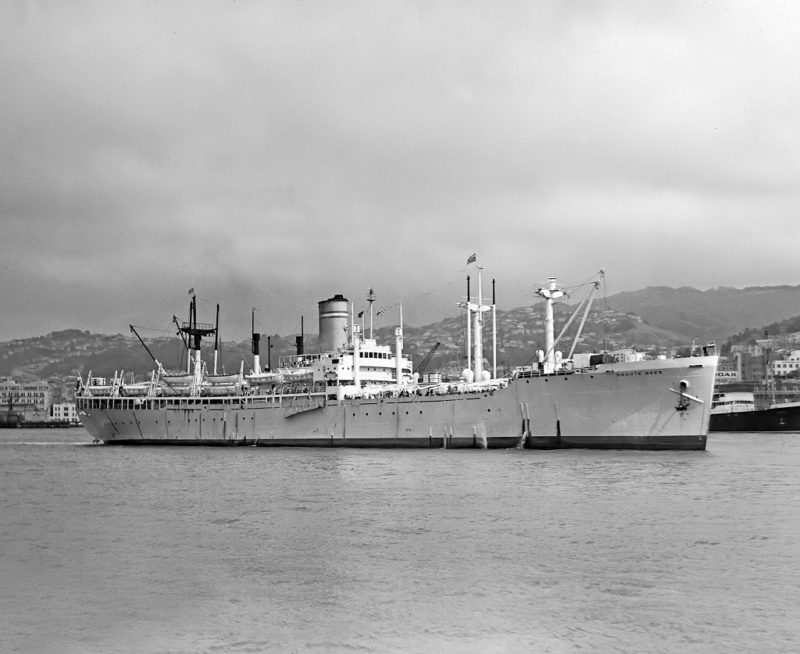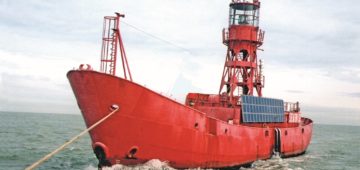Dutch Government Troop Transports and Emigrant Ships
These three famous ships were originally part of 414 standard ‘Victory’ (VC2-S-AP5) types of 7,630 grt and 117 Victory Attack Transports (AP and APA) types that were built by numerous American shipyards during World War II. This gave a total of 531 fast ships that were ideal to support the fast-moving American island troop advances in the Pacific towards Japan. Some 97 of the standard VC2-S-AP5 were completed as troopships before the war ended with a service speed of 17 knots or higher from steam turbine machinery. Extensive use of prefabrication was made with arc welding used instead of the traditional riveting by sub -contractors some distance away from where the final assembly of the hull took place on ‘green field’ shipbuilding sites. The hulls were specially strengthened for use in war zones.
Cranston Victory was launched on 5th May 1944 at the Portland yard of the Oregon Shipbuilding Company, and after fitting out was operated by the U. S. Maritime Commission for the South Atlantic Steamship Company of Savannah. She was purchased in February 1947 by the Dutch Government (Directorate-General of Shipping) for $1.005 million and renamed Zuiderkruis after the constellation of the Southern Cross of four bright stars. It is also known as Crux, a cross shaped asterism prominent in the Southern Hemisphere, and although the smallest of 88 constellations in the night sky, it is one of the best known and the most prominent seen in Australia and New Zealand.
Costa Rica Victory was launched on 17th June 1944 at the Richmond (California) yard of the Permanente Metals Company, and completed three months later for the U.S. Maritime Commission and operated by the American-Hawaiian Steamship Corporation of New York. She was purchased by the Dutch Government on 19th February 1947 for $1.005 million and renamed Groote Beer (Great Bear) after the constellation of Ursa Major of seven stars seen in the Northern Hemisphere. The constellation is well-known as the ‘Plough’ in the U.K. and as the ‘Big Dipper’ in the U.S.A. and Canada. Consequently, it is the best known constellation in the night sky, and is commonly drawn to represent the hindquarters and tail of a large bear. Six of the seven stars are of magnitude 2.0 or higher.

La Grande Victory was launched on 16th January 1945 at the Portland yard of the Oregon Shipbuilding Company for the U.S. Maritime Commission, and was operated by the Shephard Steamship Company of Boston. She was purchased in February 1947 by the Dutch Government (Directorate-General of Shipping) for $1.005 million and renamed Waterman, which is the constellation of Aquarius. This is one of the oldest recognised constellations along the zodiac of the sun’s apparent path, and was known to the Romans as the ‘water carrier’ or ‘waterman’. The star Beta Aquaril is of bright magnitude 2.9 and is the brightest star in this constellation.
Many more of these fast troopships found their way into the fleets of the emigrant shipping companies and governments of the United States, Canada, Greece, Australia and New Zealand. The troopships had austere dormitory accommodation down in the five holds of the ‘Victory’ types, and this was the case with Groote Beer, Waterman and Zuiderkruis between 1947 and 1951 when employed on long voyages to and from the Dutch East Indies and Dutch New Guinea. The trio were used from Holland to the Dutch East Indies to carry troops to the Dutch colony to restore the peace after the Japanese surrender when the Dutch archipelago was in turmoil. After the independence of Indonesia in 1948, all Dutch troops were repatriated, and then it was the turn of the Dutch civilians to be repatriated to Holland. This mission was completely and successfully finished in 1951.

Subscribe today to read the full article!
Simply click below to subscribe and not only read the full article instantly, but gain unparalleled access to the specialist magazine for shipping enthusiasts.







Comments
Sorry, comments are closed for this item